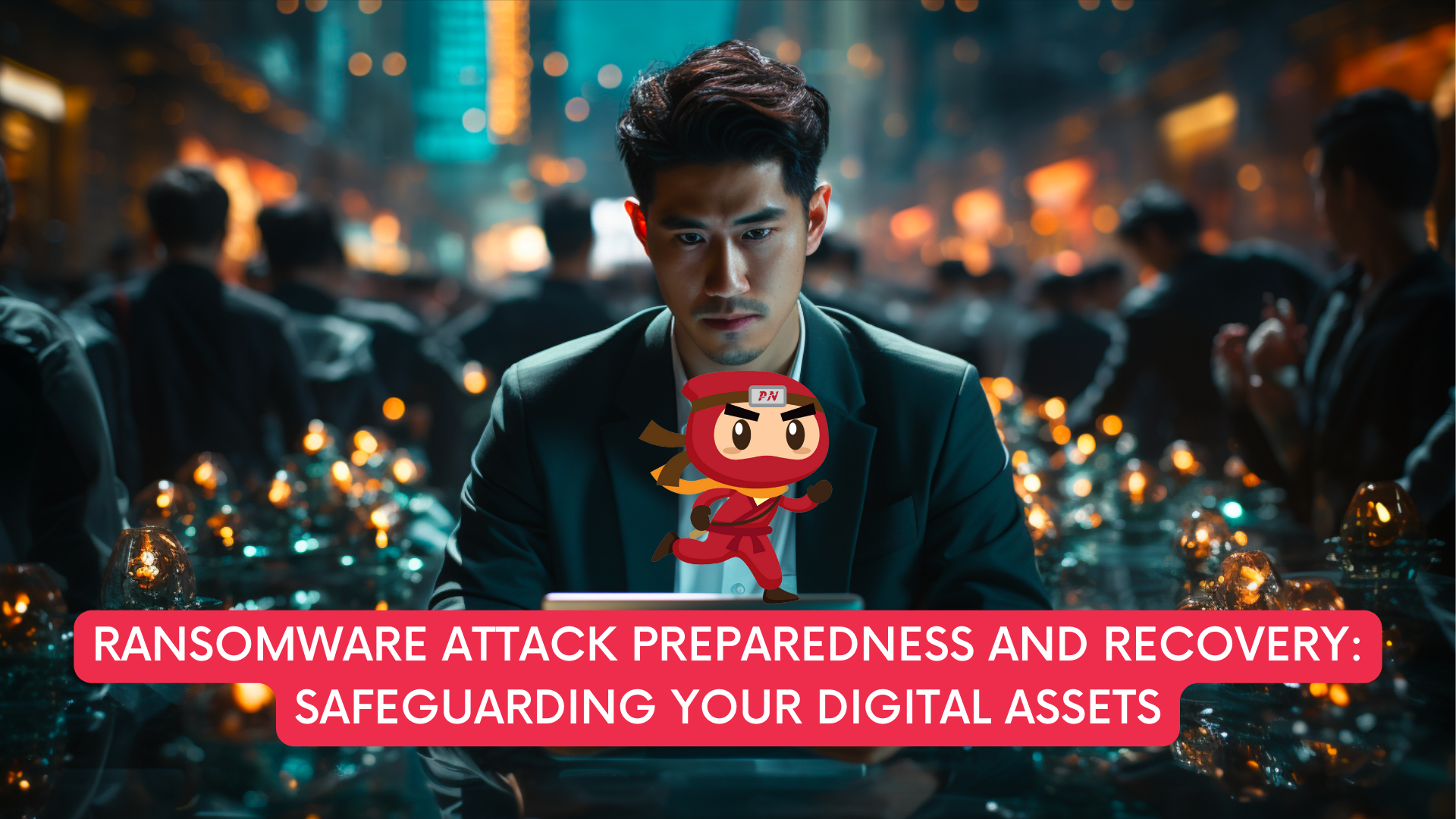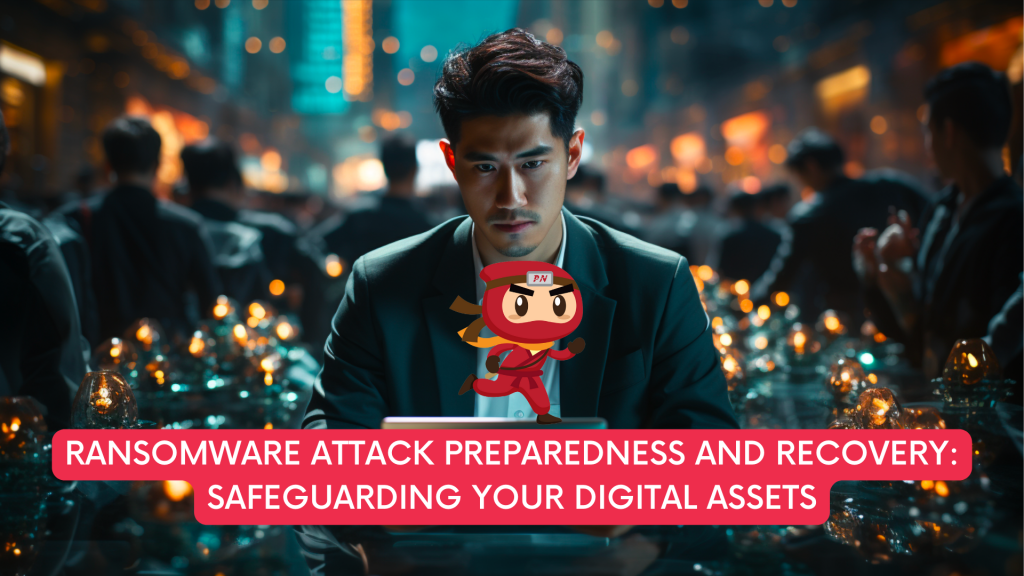KEEP IN TOUCH
Subscribe to our mailing list to get free tips on Data Protection and Cybersecurity updates weekly!







The ever-present threat of ransomware attacks poses a significant risk to individuals and organisations of all sizes. It is imperative to be well-prepared and equipped with the knowledge of effectively recovering from a ransomware attack.
Ransomware attacks are increasingly sophisticated and can have devastating consequences. Cybercriminals exploit vulnerabilities in systems and networks, encrypting files and holding them hostage until a ransom is paid. However, by taking proactive measures and having a robust response plan in place, you can minimise the impact and protect your digital infrastructure.
To begin, it is crucial to understand the evolving nature of ransomware attacks and the various methods employed by cybercriminals. By staying informed about the latest attack vectors, you can better defend against potential threats and adapt your security measures accordingly.
Incorporating a Data Protection Officer (DPO) into your ransomware preparedness strategy can provide an additional layer of expertise and guidance. A DPO is a professional responsible for overseeing data protection efforts within an organisation, ensuring compliance with relevant regulations and best practices.
A DPO can assist in developing and implementing robust security measures to prevent ransomware attacks. By staying informed about emerging threats and understanding the organisation’s data landscape, the DPO can contribute valuable insights to strengthen cybersecurity defences.

Here’s the essential information and actionable steps to help you prepare for, respond to, and recover from a ransomware attack that every organisation in Singapore should know of.
1. Understanding Ransomware:
Ransomware is a malicious software that encrypts your files or locks you out of your systems, demanding a ransom payment in exchange for restoring access. It typically spreads through phishing emails, malicious downloads, or vulnerabilities in software. Familiarise yourself with different types of ransomware, common attack vectors, and evolving tactics used by cybercriminals to stay one step ahead.
2. Backup Your Data:
Regularly backing up your data is vital for ransomware preparedness. Implement a robust backup strategy that includes both offline and offsite backups. Offline backups, such as external hard drives or network-attached storage, provide an extra layer of protection against ransomware as they are not constantly connected to your network. Offsite backups, using cloud storage or remote servers, ensure data redundancy and enable quick restoration in case of an attack.
3. Educate and Train Employees:
Human error is often the weakest link in cybersecurity. Educate and train employees about the risks associated with ransomware attacks, emphasising safe browsing habits, email security best practices, and the importance of not opening suspicious attachments or clicking on unfamiliar links. Conduct regular security awareness training sessions to reinforce good cybersecurity practices and foster a security-conscious culture within your organisation.
4. Implement Multi-Layered Security Measures:
Employing a multi-layered security approach significantly reduces the risk of a successful ransomware attack. Install reputable antivirus and anti-malware software to detect and block malicious files. Keep all operating systems, applications, and security patches up to date to address known vulnerabilities. Deploy a robust firewall, intrusion detection and prevention systems, and endpoint protection solutions to detect and mitigate threats in real-time.
5. Develop an Incident Response Plan:
Preparing an incident response plan ensures a swift and coordinated response in the event of a ransomware attack. Define roles and responsibilities for incident response team members, establish clear communication channels, and outline step-by-step procedures for detecting, containing, and recovering from an attack. Test the plan regularly through simulated exercises to identify areas for improvement and familiarize your team with the response process.
6. Isolate and Contain Infected Systems:
If a ransomware attack occurs, swift action is crucial. Immediately isolate infected systems from the network to prevent further spread. Disconnect compromised devices and shut them down to limit the encryption or damage caused by the ransomware. Preserve any available evidence for forensic analysis to aid law enforcement and recovery efforts.
7. Engage with Law Enforcement:
Report the ransomware attack to your local law enforcement agency or cybercrime unit. Provide them with all relevant details, including the ransom note and any communication received from the attackers. Cooperation with law enforcement can assist in tracking down the perpetrators and potentially recovering encrypted data.
8. Assess the Impact and Determine Recovery Strategy:
Assess the impact of the ransomware attack by identifying which systems and data have been compromised. Prioritise critical systems and sensitive data for recovery. Depending on the circumstances, consult with cybersecurity experts to determine the most appropriate recovery strategy, considering factors such as data backups, available decryption tools, and professional assistance.
9. Restore Systems from Backups:
If you have comprehensive and up-to-date backups, restore affected systems from a clean backup source. Ensure the backups are free from any traces of malware before the restoration process. This step is where regular backups prove invaluable, allowing you to recover encrypted data without paying the ransom.
10. Strengthen Security Posture:
Once the recovery process is complete, analyse the root cause of the ransomware attack and identify any security gaps or vulnerabilities that were exploited. Address these weaknesses by enhancing security measures, updating security policies, and implementing additional layers of protection to prevent future attacks.
Preparing for a ransomware attack and effectively recovering from one requires a proactive and multi-faceted approach. By understanding the nature of ransomware, implementing robust security measures, educating employees, and having a well-defined incident response plan, you can significantly mitigate the risks and potential impact of an attack. Regular backups and maintaining an ongoing focus on cybersecurity will help safeguard your digital assets and ensure a more resilient and secure digital environment.

Your appointed DPO can work with you on your PDPA compliance, ensuring that there will be policies in place to make sure that the handling of personal data is PDPA compliant. This includes promptly responding to the PDPC with their queries to expedite the investigations and prevent a harsher penalty from the Commission.
A Data Protection Officer (DPO) oversees data protection responsibilities and ensures that organisations comply with the Personal Data Protection Act (PDPA). Furthermore, every Organization’s DPO should be able to curb any instances of PDPA noncompliance as it is the officer responsible for maintaining the positive posture of an organisation’s cybersecurity.
DPOs complement organisations’ efforts to ensure that the organisation’s methods of collecting personal data comply with the PDPA. It also ensures that policies are set in place to make sure that there will be no instances of data breaches in the future.
Don’t wait any longer to ensure your organisation is PDPA compliant. Take our free 3-minute PDPA Compliance Self-audit checklist now, the same “secret weapon” used by our clients to keep them on track. Upon completion, we will send you the results so you can take the necessary action to protect your customers’ data. Complete the free assessment checklist today and take the first step towards protecting your customers’ personal data.